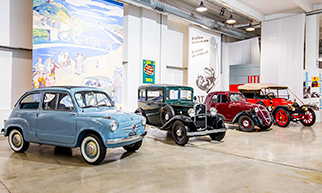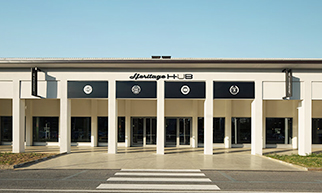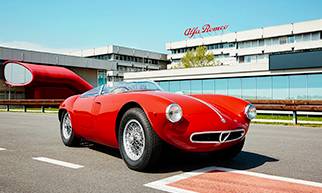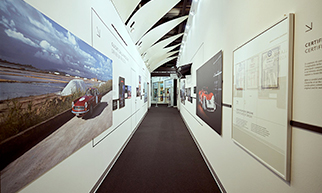With the “Millenove”, Alfa Romeo introduced the first assembly line at the Portello plant, created its first car with a load-bearing body and launched the four-cylinder twin-cam engine that would pave the way for years of future success.
After winning the first two Formula 1 World Championships, Alfa Romeo left the highest category of motor racing undefeated, an achievement that most constructors can only dream of. It was no early retirement by a fading champion anticipating a reversal in fortunes, but a very deliberate strategic choice linked to transformations under way in the company. The Milanese automaker was concentrating all its efforts on manufacturing a new car, a task that it entrusted to designer Orazio Satta Puliga. Indeed in 1950, the elegant 1900 was unveiled, the first Alfa Romeo car with a unitised body integrated with the chassis. But that was not the only innovation: the Portello plant was radically restructured for industrial-scale production by introducing an assembly line.
The Alfa Romeo 1900 had a conventional mechanical design, including a longitudinal front engine, four-speed gearbox, rear wheel drive, independent front suspension with coil springs and stabiliser bar, plus a rigid rear axle with longitudinal connecting rod, central triangular arm and coil springs. The straight-four 1884 cc engine, which was equipped with an aluminium cylinder head with two chain-driven camshafts fed by a single carburettor, developed 80 hp and propelled the 1100 kg Millenove to a top speed of 150 km/h.
On the outside, the saloon silhouette was sedate and elegant, characterised by soft curves and a chrome-plated grille with distinctive three-lobed motif, an unmistakable style hallmark of the Milanese manufacturer. On the inside, the single front seat bench and steering-mounted gear lever allowed the car to easily transport six people.
Known for its famous slogan, "The family car that wins races", the 1900 was an excellent saloon for everyday use and began to dominate competitions in the Touring class.
Although contingent factors prompted Alfa to leave Formula 1, the Milanese car maker stayed true to its sporting DNA. Over the years, the first 1900 was supplemented with more powerful versions, starting with the T.I. (Turismo Internazionale) in 1952, which adopted a twin-barrel carburettor and larger valves that enabled the twin-cam engine to deliver 100 hp at 5500 rpm, for a top speed of 170 km/h. The car became a favourite among gentlemen drivers and enthusiasts competing in road and track races.
In 1954 came the 1900 Super and the feistier T.I. Super, both featuring an increased displacement of 1957 cc. With a higher compression ratio of 8:1, the T.I. Super produced 115 hp and its top speed increased to 180 km/h. Coachbuilder Boano created an original three-door version based on the Berlina, which was called the "Primavera" and was also available in a two-tone variant.
In 1951, Alfa Romeo began designing variants of the saloon, to offer customers different styling and usage possibilities. Rolling chassis were made available to major design studios: Pininfarina created an elegant coupé and a sedate cabriolet, while Touring penned a sports berlinetta with aluminium bodywork called the 1900 Sprint, which in 1955 was updated and renamed the 1900 Super Sprint with the introduction of the 1957 cc engine and 5-speed gearbox; this last setup formed the basis of a racing version developed by Zagato, the original SSZ coupé.
But the most powerful and eye-popping creation was undoubtedly the 1900 C52, an experimental sports racing car better known as the "Disco Volante" (Flying Saucer), which was also bodied by Touring. Its output was boosted to 158 hp and the racing tubular chassis lowered the overall weight to 735 kg for a top speed of 220 km/h.
Production of the Alfa Romeo 1900 ended within less than ten years in 1958, after over 17,000 units had rolled off the Portello assembly line. Various versions of the magnificent Alfa Romeo 1900 are included in the FCA Heritage collection and currently on display at the Alfa Romeo Museum in Milan.





